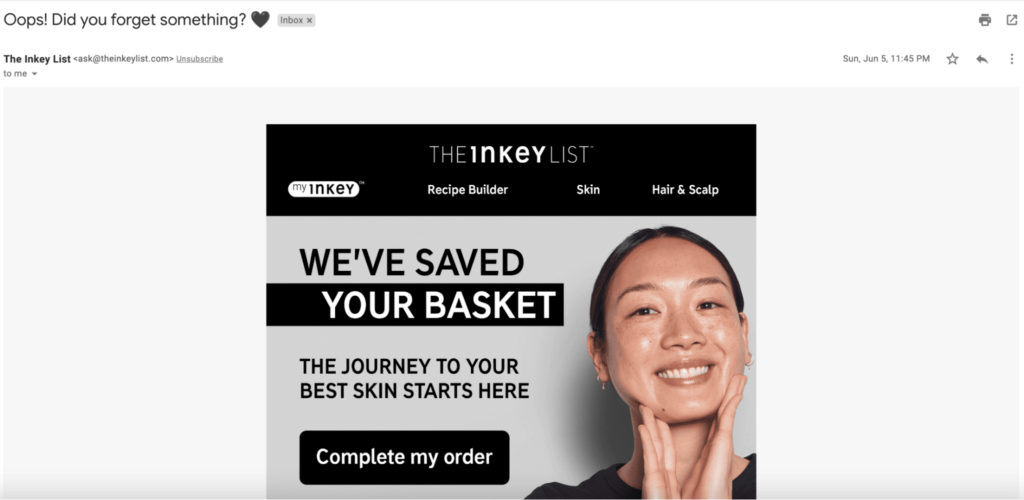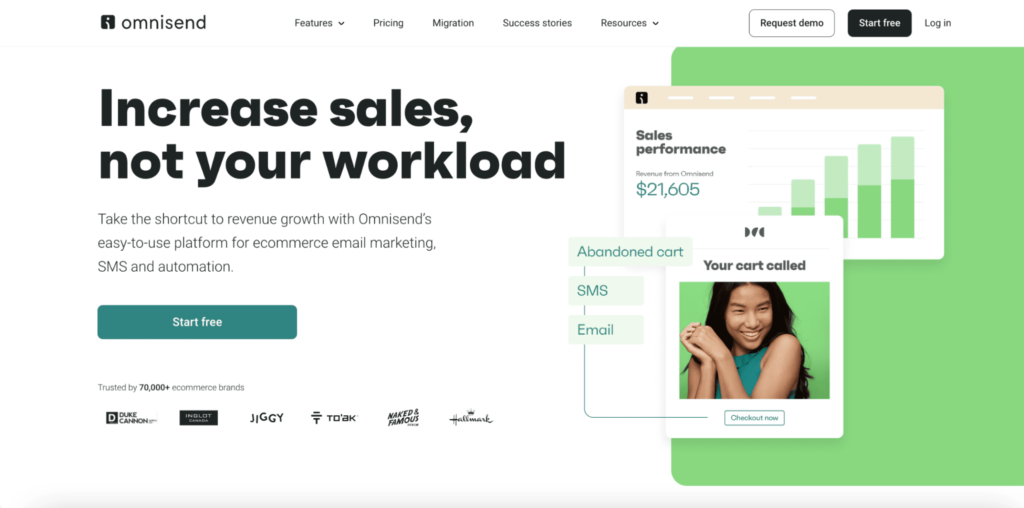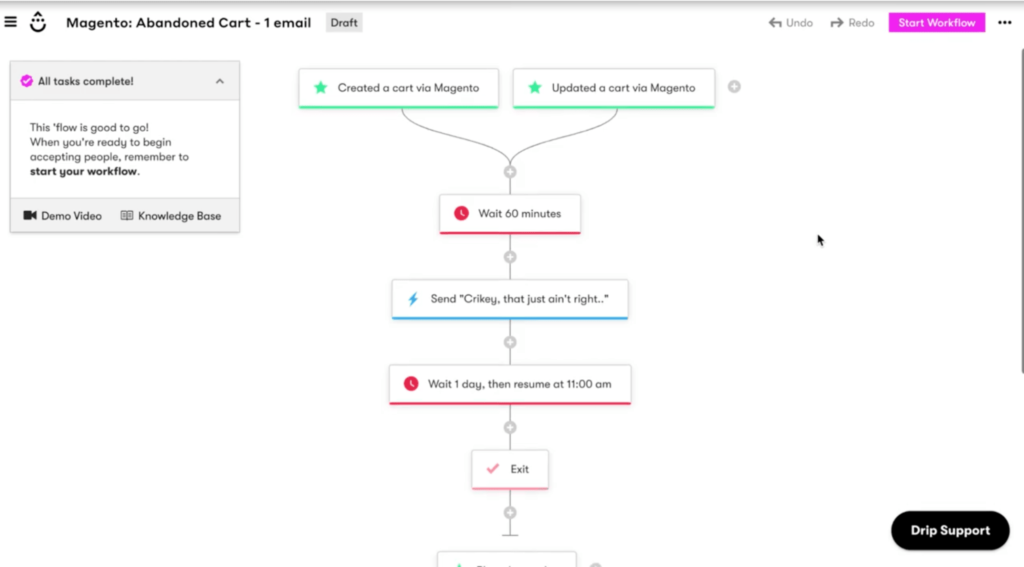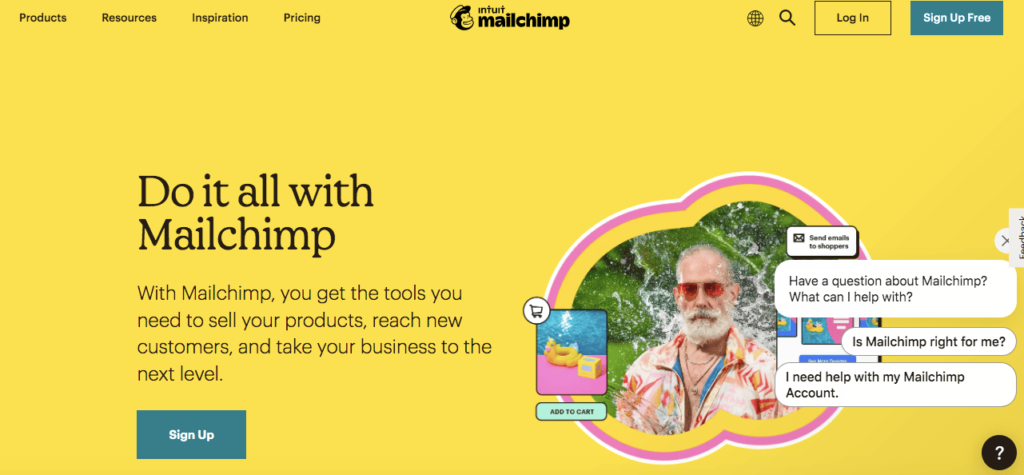With the rise of social media platforms like Instagram, Facebook, TikTok, and Youtube, many companies have forgotten about or neglected good old-fashioned email marketing.
Email marketing still remains one of the most effective digital marketing strategies. It generates an average of $36 for every $1 spent. If you want to take advantage of this, there’s no better way than doing email automation properly.
In this blog, we walk you through email automation and how you can dramatically increase your sales with proper email automation. Let’s get started.
Benefits of Email Automation
Email automation is the process of sending pre-written emails to customers automatically at certain times. For example, you can schedule emails to send automatically for:
- Abandoned cart notifications
- Birthday greetings
- Welcome messages for new subscribers
- Order confirmations
- Shipping confirmations
- Cross-sell and upsell messages
- Product abandonment messages

Email automation allows you to send the exact right information to your email subscribers and customers at the exact right time, without you having to do anything except set up the automation in advance.
With email automation, you can take advantage of the following benefits:
Saves time: Email automation allows you to save a tremendous amount of time. You can send multiple emails to your subscriber list regularly without having to actually go through and send them individually.
Removes repetitive tasks: Once you write the initial emails, you won’t have to write them again. Instead, your emails will automatically be sent at the right times when a customer takes an action that triggers them.
Builds customer relationships: Email automation can also help you to build and maintain a good relationship with your customers. For example, when a customer receives an automated happy birthday email, this can help to strengthen their emotional connection to your company.
Improves conversion: Automated emails are also extremely effective at converting. In fact, automated emails triggered to send after a specific stimulus get an average of 300% more clicks than general promotional emails.
How to Do Email Automation Properly to Boost Sales
Writing an email once and sending it to whoever and whenever it should may sound simple. But the reality is email marketing automation is not something you can start on a whim.
Careful consideration must be given to several steps to get the most out of your email marketing automation strategy and properly boost sales.
1. Choose an Email Automation Tool
Setting up automated emails is impossible with regular email services like Gmail, Outlook, or Yahoo! Mail.
For email automation to work, you’ll need software that can:
- Send emails based on triggers or specific actions
- Integrate with your customer relationship management (CRM) software
- Segment your email list based on characteristics or actions
- Provide analytics
There are many tools available at your disposal. But, if you want to implement email automation properly, you need to be super meticulous when choosing which automation tool to use.
Here are some of the things to consider when choosing the right email automation tool:
Types of emails you’ll send: As an ecommerce business, you’ll need to send transactional emails. Your automation platform should be able to automate them. Emails such as an abandoned cart, purchase confirmation, and delivery updates.

The number of emails you’ll send: Some platforms limit the number of emails you can send per month. So depending on the volume of emails you plan to send, you’d need a platform and a plan that supports it.
Must-have features: Ask yourself what are your must-haves and deal breakers. Do you need ready-made templates? Or do you need to visualize your workflows and automations? Maybe you require that the platforms allow you to schedule? If you don’t already have an email list, do you need a platform that has lead capture mechanisms built in?

Subscriber list: How many subscribers do you plan to manage? If your list is relatively small, you could choose a platform with a free plan for less than 500 subscribers. However, if your list is huge, you’ll need a platform that has a high maximum or an unlimited number of subscribers. For example, MailChimp’s free plan is much more generous than other platforms, as you’re allowed to have up to 2000 subscribers on your list.

2. Grow Your Email List
Email marketing is ultimately a numbers game. To optimize the effectiveness of your email automation, you’ll need your email list to be as large as possible. Needless to say, however, you must avoid unethical ways of growing your list, like buying email addresses.
Most people are more than willing to give you their contact information if you present them with an irresistible offer.

You can grow your email list by using pop-ups, alert bars, sign-up forms, and scroll boxes on your website. As mentioned before, they need to advertise an appealing offer, for example, a discount, exclusive news, a giveaway, or valuable content like an eBook or checklist.
Top Tip: To ensure that your pop-up (or any other lead capture tool) can grab your viewers’ attention, your pop-up should appear at the right time. Keeping it simple by only asking for necessary information can also increase your chances of getting emails.
3. Create Automation Triggers
You will have to create these triggers inside the email automation software you decide to use. These triggers can be customer orders, birthdays, abandoned carts, etc. You should identify the most important triggers and program emails to be sent when these triggers occur in the email automation software that you are using.
Quick tips for using triggers:
- Think through your outcome and the path. For example, if x happens, what do you want to happen next? How will that be different if y happens?
- Make the email content as personalized to the action as possible. For example, if someone signs up for your newsletter, welcome them in the first email instead of just sending a product catalog.
- Choose a suitable time after a specific trigger to send an email. For example, it might be more appropriate to send an abandoned cart email after an hour of leaving your website rather than within the next 5 minutes.
4. Write and Design Your Emails
Before you can start automatically sending your emails when triggered, you will have to write and design them. So, naturally, you want to make them look very clean, crisp, and beautiful.

You can add brand logos, images, etc., to the emails. They do not only have to be composed of text. EGO Official’s marketing emails are a great example of eye-catching designs with little text. They use the image to announce their sales and only use text as descriptive links to direct users to their website.
Remember that you will spend hundreds or thousands of these emails regularly, so you want to ensure that they look good and are well-written.
Top tip: If you don’t have much experience in copywriting or designing, you can connect with professional freelancers to help with the process. Sites like LinkedIn ProFinder, Upwork, and Freelancer are homes to many experienced writers and graphic designers ready to handle your projects. You should consider the advantages and drawbacks and how you plan to manage them.
5. Initiate the Automation
Even after completing steps one through four, there are still several things to check off before initiating the automation.
Evaluate subject lines: A perfectly set up automation is worthless if the recipients never even open the emails. So your subject lines play a critical role in determining your open rates. Try to keep your subject lines short, ideally within 60 characters. Although brief, they still have to pique interest, giving them a taste of what’s inside without revealing the whole thing.
Double and triple check your segments: How embarrassing would it be to send a welcome email to someone who has been on your test for months? Or how unfortunate would it be if your VIP segment did not receive the discounts you promised because you sent it to the wrong group? Always review your segments, triggers, and automation to confirm the right emails are sent to the right person at the right time.
Perfect your content: Grammatical errors can destroy your reputation. Whether you’re using graphics or text, check that there are no typos, that the content is easy to read, and that the links are correct.
Test the automation: Before your automation goes live, test it. Complete the action or actions that would trigger the workflow. If there are parallel paths, for example, if the automation is different for actions x and y and you can’t complete both actions simultaneously, have someone do x while you do y. Verify that the emails are formatted correctly and look good on multiple devices.
What’s next?
The results that you can expect from our automated email tips vary significantly from business to business, email list to email list, and product to product (or service to service).
Generally speaking, the bigger your email list is and the better your product and/or service, the more you increase your chances of generating sales from your email automation efforts.
To get the best results, you should carefully monitor the performance of your automated emails. If you notice that one of your automated emails is not performing well, then you might have to rewrite it. Sometimes, it might take you rewriting your emails several times before you can get a version that performs at a very high level.
It is equally important to leave your best-performing emails alone. If you have a few automated emails working extremely well, it is your best bet to leave them alone and not try to change them too much. “If it’s not broken, don’t try to fix it.”
Conclusion
Although social media marketing steals a lot of the spotlight from email marketing, it still remains one of the most effective digital marketing strategies.
So, you should never neglect it.
Email automation, in particular, can be extremely helpful. Once you set it up, you can just let it run with minimal upkeep needed. When email automation is executed correctly, it can be enormously beneficial to almost any business.








